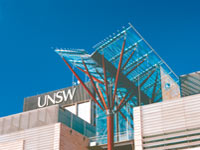|
||||||||||||||||||||||||||||||||||||||||||||
| Electromagnetic Engineering - ELEC3115 | ||||||||||||||||||||||||||||||||||||||||||||

Description Review of vector calculus, Electric Fields: Coulomb's and Gauss's laws and Maxwell's equations, Electric potential, Laplace's and Poisson's equations; Magnetic Fields: Biot-Savart law, Vector potential and Ampere's law and Maxwell's equations;Application of Gauss's law; Solution of Poisson's and Laplace's equations for electric field; Boundary value problems and method of images; Dielectric materials, capacitance, electrostatic energy and forces, losses; Field and current density, conductance; Application of Ampere's law; Magnetic materials, inductance, coupling in magnetic circuits; Magnetic energy and forces.Application of Faraday's law, transformers; Skin effect and skin depth, hysteresis and eddy current losses. Electromagnetic spectrum. Time-varying fields and Maxwell's equations: forms, boundary conditions. Plane electromagnetic waves in lossless/lossy media: polarization, group velocity dispersion, energy flows, Poynting vector, reflection/refraction at boundary. Transmission lines: wave characteristics, impedance and matching.Waveguides: modal analysis of rectangular metallic waveguides. Antennas: antenna patterns and parameters, linear dipole, antenna array.
|
||||||||||||||||||||||||||||||||||||||||||||


